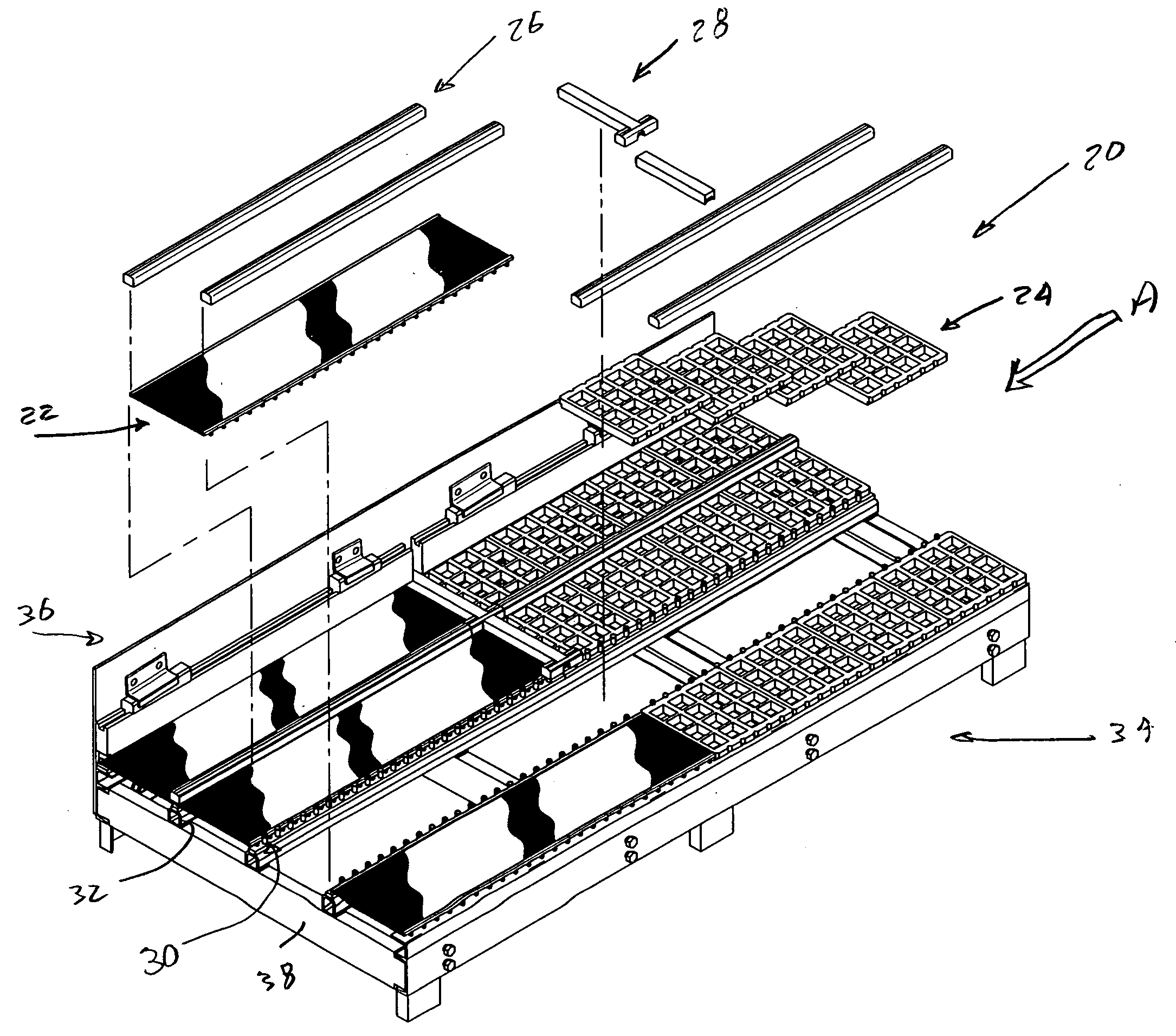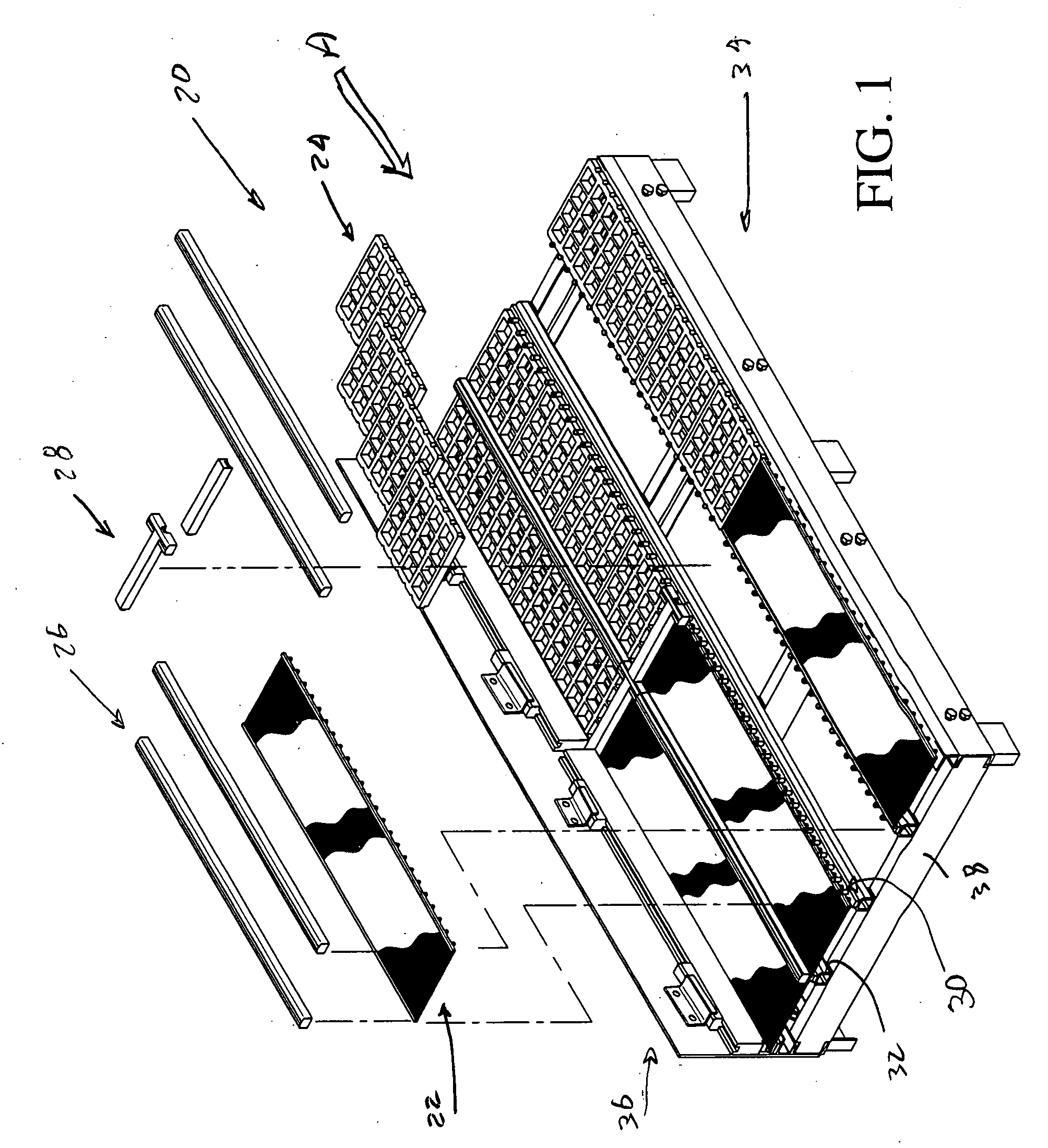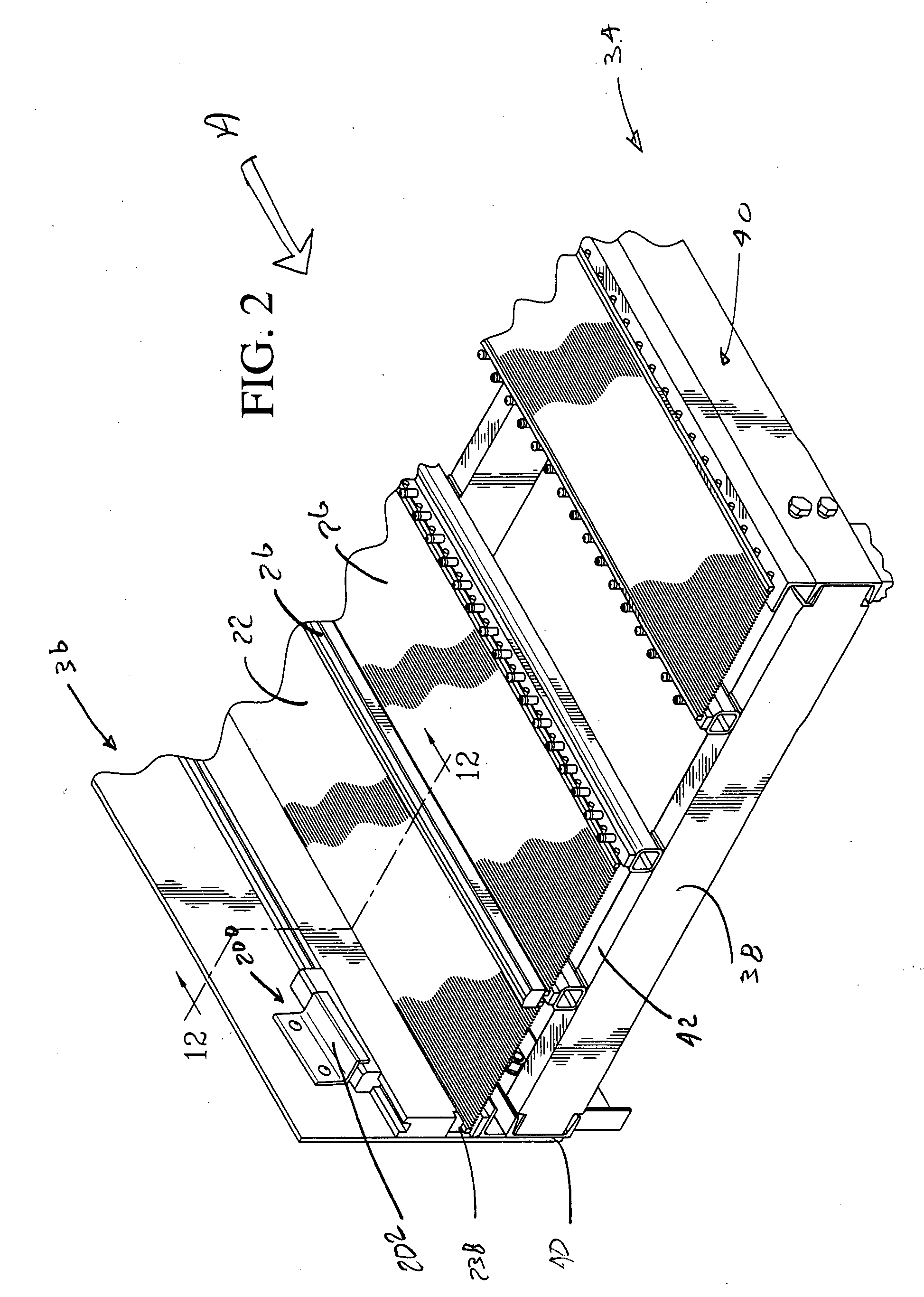Snap lock separatory panel and retainer system
a technology of retainer and separator, which is applied in the direction of solid separation, fastening means, screws, etc., can solve the problems of increasing the time required to install the system and replace worn screen panels, and the provision of screen panel edge strips which are less easily installed than would be desired, so as to achieve easy use and reduce the time required for assembling and removing
- Summary
- Abstract
- Description
- Claims
- Application Information
AI Technical Summary
Benefits of technology
Problems solved by technology
Method used
Image
Examples
first embodiment
[0051]Referring again to FIG. 7, and as may also be seen in more detail in FIG. 9, in a first preferred embodiment of the present invention, each center retainer 30 is an elongated bar 50 and including a plurality of spaced, upwardly projecting center retainer pins, generally at 52. Each such center retainer pin 52 includes a pin shank 54 and an enlarged pin retainer head 56. In the center retainer, generally at 38, as depicted in FIG. 9, the center retainer pins, generally at 52 are constituted by simple retainer pins 58 and by compound retainer pins 60. While all of the retainer pins cooperate with the locking strips 26, as will be discussed in detail shortly, the compound retainer pins 60 also act to secure the center retainers 30 to the screen stringer rails 32.
[0052]As may be seen most clearly in FIG. 9, in its first preferred embodiment, the center retainer 30 includes a central, generally rectangular retainer spine 62 of metal or another suitable material. Such a central reta...
second embodiment
[0068]In the sidewall assembly shown in FIG. 2, the profile strip 212 is placed on the outboard edge of the outermost screen wire panel 22 before that screen wire panel is installed. Once the profile strip 212 has been so placed, the screen wire panel 22 can be installed and the sideboard 220 can be wedged in place. This positive securement will retain the outboard ends of the outer screen panels firmly in place.
[0069]After the various screen wire panels 22 have been positioned on the screen stringer rails 32 and on the screen stringer angle irons 152, the locking strips 26 are installed. As discussed previously, these locking strips 26 overlie the center retainer 32 and are held in place by the cooperative engagement of the enlarged heads 56 of the simple retainer pins 58 and of the compound retainer pins 60 in the cooperatively shaped receptacles 172 that are formed in each locking strip 26. As discussed previously, the sizes and dimensions of the pin shanks, the pin heads, the di...
PUM
 Login to View More
Login to View More Abstract
Description
Claims
Application Information
 Login to View More
Login to View More - R&D
- Intellectual Property
- Life Sciences
- Materials
- Tech Scout
- Unparalleled Data Quality
- Higher Quality Content
- 60% Fewer Hallucinations
Browse by: Latest US Patents, China's latest patents, Technical Efficacy Thesaurus, Application Domain, Technology Topic, Popular Technical Reports.
© 2025 PatSnap. All rights reserved.Legal|Privacy policy|Modern Slavery Act Transparency Statement|Sitemap|About US| Contact US: help@patsnap.com



